
Validating a Single Client View
SCV empowers users with advanced search functionalities, allowing them to filter and search across various datasets for efficient information retrieval. Furthermore, SCV fosters better workflow management by enabling users to track favorite clients and access past interactions.

User Flow for Single Client View
Overview:
The EMEA Division from a financial institution brought to the Innovation Team an idea to validate a Single Client View (SCV) platform.
SCV modernizes the workflow by consolidating fragmented client data spread across 8 platforms into 1, reducing work tasks, information search,
and interdepartmental communications from weeks to months that now can be done in days.
I led a 6-week user-centered design process, involved user research, prototyping, and validation, resulting in a high-fidelity prototype and
video presentation for executive funding.The process confirmed user needs, technical feasibility, and secured funding for SCV development, showcasing the value of early user and
SME involvement.The SCV platform streamlines workflows, improves data access and interdepartmental communications, and provides a customized interface,
ultimately enhancing client insights and user experience.
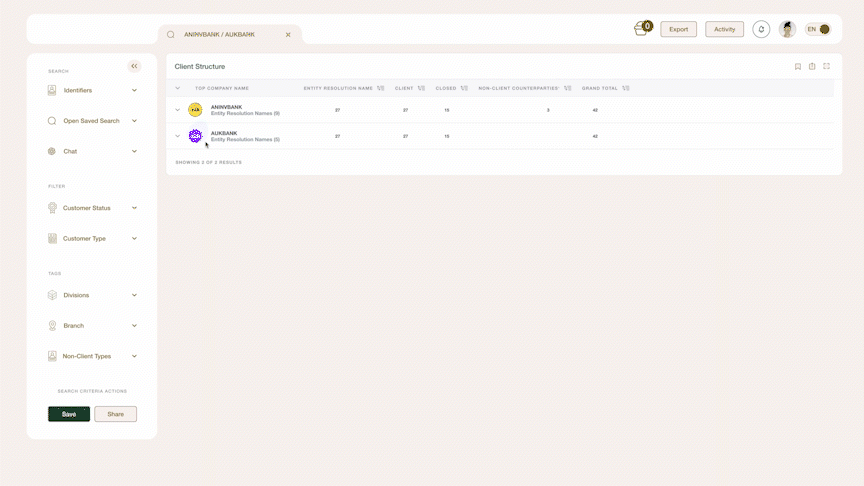
Challenge:
The Innovation Team of a Financial Institution envisioned a Single Client View (SCV) platform to leverage data from The Data Hub
and MDM technology. However, before investing in development resources, they needed to confirm user needs and validate the technical
feasibility of their vision. The Innovation Team envisioned a Single Client View (SCV) platform to leverage data from The Data Hub and MDM
technology. However, before investing in development resources, they needed to confirm user needs and validate the technical feasibility of
their vision.
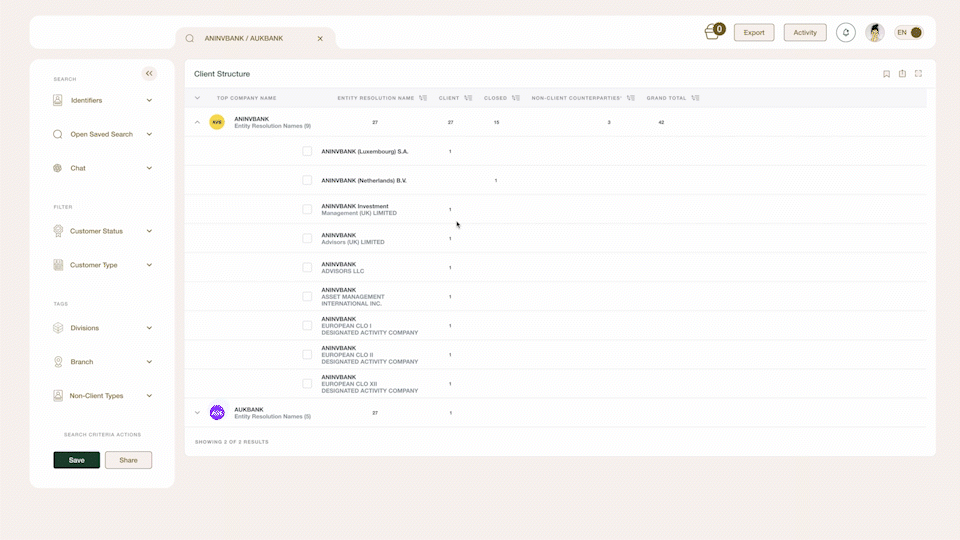
Impact:
The Single Client View (SCV) delivers a streamlined user experience by:
• Unifying Client Data: Consolidating fragmented data into a single platform, eliminating the need for juggling multiple systems.
• Enhancing Client Insights: Providing a comprehensive view of the client, encompassing both legal and operational perspectives.
• Empowering Information Retrieval: Offering advanced search functionalities with filters and multi-dataset searching for efficient
information retrieval.
• Improving Workflow Management: Enabling users to track favorite clients and access past interactions for better organization.
• Ensuring Data Security: Implementing granular access control, ensuring users only see relevant data based on their permissions.
• Promoting User Experience: Providing a customized EIC interface allowing users to tailor information displays to their specific needs
and roles.
• Enabling Future Growth: Paving the way for seamless integration with future data analysis tools, enhancing user capabilities.
• Validated Vision: User feedback and SME buy-in confirmed the value proposition of the proposed SCV platform.
• Informed Planning: The project identified key development areas and established a foundation for planning the delivery of EIC and
transaction monitoring platforms, ensuring their alignment with the SCV vision.
• Technical Feasibility Insights: The project provided valuable insights into the technical architecture needed to support the SCV platform,
allowing for informed decision-making about future development.
• Secured Funding: Based on the positive reception of the prototype and video presentation to executives, the Innovation Team secured
funding for SCV platform development.
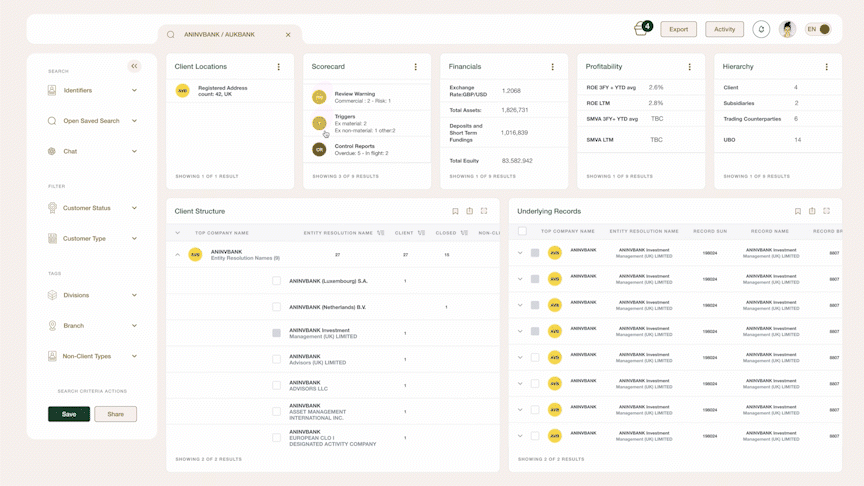
My Role:
As the UX Lead, I spearheaded a 6-week user-centered design process to achieve the following:
• Gather User Insights: I led workshops to understand user needs and pain points associated with the current system. This involved interviews
with client executives and staff members as current users of the system.
• Define User Flows & Information Architecture: I led the creation of user flows that mapped out core user journeys within the envisioned
SCV platform.
• Develop a Low-Fidelity Prototype: Leveraging the defined user flows and information architecture, I developed a low-fidelity prototype
that showcased the core functionalities of the SCV platform.
• Craft User Stories & Video Script: I captured user needs and pain points through user stories. I then authored a video script that effectively
communicated the SCV concept, user journey, and business value proposition, using the prototype as a visual aid.
• Facilitate User Testing & SME Validation: I oversaw user testing sessions to gather feedback on the prototype's usability and effectiveness.
Additionally, I presented the prototype and findings to Subject Matter Experts (SMEs) for technical validation and to ensure alignment with
the SCV vision.
• Guide the UI Designer to develop High-fidelity prototypes based on the defined user flows and information architecture. The UI designer
was responsible for the visual design aspects of the prototype, such as the layout, styling, and overall user interface.
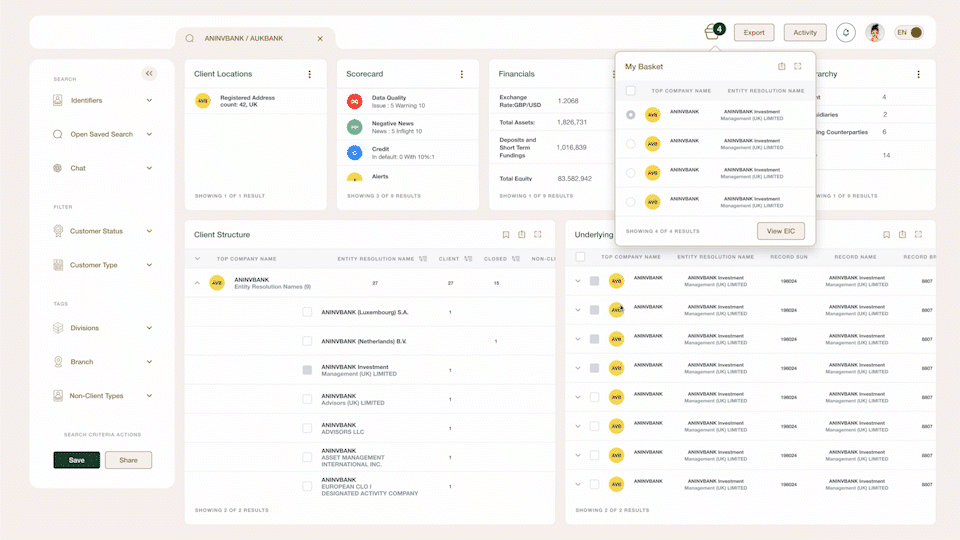
Process and Solution:
Single Client View (SCV) streamlines the user experience by consolidating fragmented client data into a single platform. This eliminates
the need for multiple logins and offers a comprehensive view of the client, encompassing both legal and operational perspectives. SCV
empowers users with advanced search functionalities, allowing them to filter and search across various datasets for efficient information
retrieval. Furthermore, SCV fosters better workflow management by enabling users to track favorite clients and access past interactions.
Granular access control ensures users see only relevant data based on their permissions. The customized EIC interface allows users to tailor
information displays to their specific needs and roles. Finally, SCV paves the way for future integrations with data analysis tools, further
enhancing user capabilities.
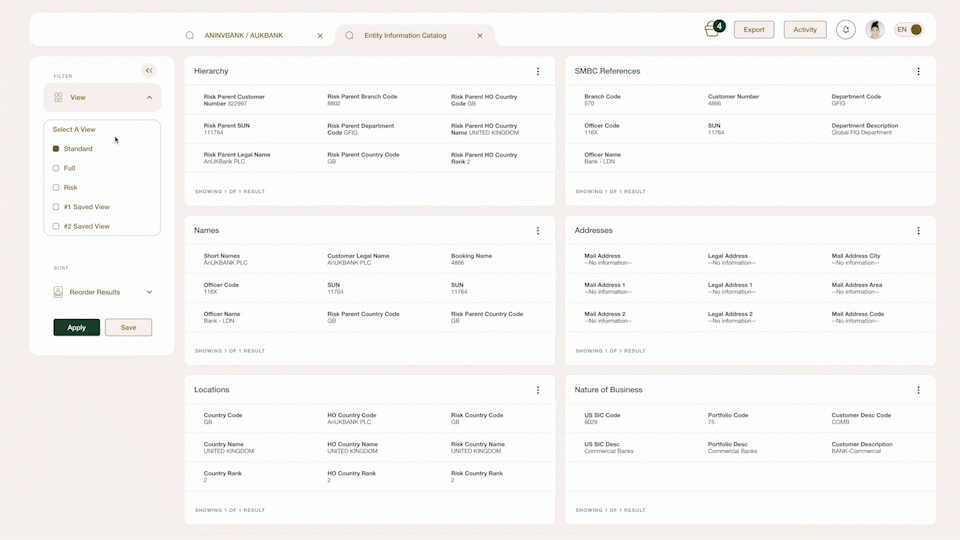
The 6-week project adopted a user-centered design approach, with each week building upon the previous one:
• Week 1: Setting the Stage: We kicked off the project by defining user flows, establishing a workshop cadence, initiating the design
system foundation (color palette, layout), and identifying SMEs and users for testing. We also began gathering functional requirements
through user stories and pain point identification.
• Weeks 2 & 3: Refining the User Journey: Through collaborative workshops, we built a comprehensive user journey map outlining key touch
points and pain points within the current system. This map helped identify opportunities for improvement within the SCV platform. The journey
map and functional requirements were further refined based on feedback from SME reviews.
• Week 4: Defining the Minimum Viable Product (MVP): We focused on core user flows and processes by defining the journey map scope for
the MVP. A user flow was then created based on the scoped journey map.
• Week 5: Prototype Development & Testing: Using the approved wireframes, a low-fidelity prototype was developed for user testing.
• Week 6: Video Production & Green-light: The video script was created based on user stories, the journey map, and the overall SCV business
value. The final video showcased the prototype's interaction with user needs and the business value proposition.
Key Takeaways:
This case study highlights the importance of user-centered design and prototyping in validating complex concepts. By involving users and
SMEs early in the process, we were able to:
• Gather valuable user feedback to ensure the SCV platform addresses real needs and pain points.
• Gain buy-in from stakeholders by providing a tangible representation of the SCV vision.
• Make informed decisions about technical feasibility and development priorities.
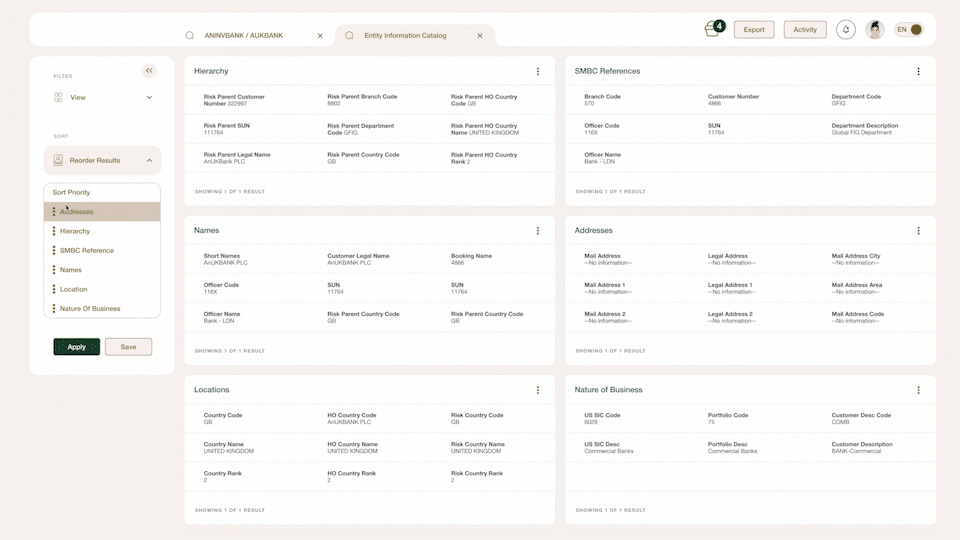
Customer Benefits of the Single Client View (SCV):
• Consolidated Client Data: Gain a holistic view of the client with legal and operational perspectives in one platform, eliminating
fragmented data access.
• Simplified Access: Eliminate the need for multiple logins with Single Sign-On (SSO).
• Enhanced Search Capabilities: Efficiently find information through advanced search functionalities with filters and multi-dataset
searching.
• Improved Workflow Management: Track favorite clients and access past interactions for better organization.
• Granular Access Control: Ensure users only see relevant data based on their specific permissions.
• Customizable Interface: Tailor the EIC interface to fit individual user needs and roles.
• Future-proof Platform: Paves the way for seamless integration with data analysis tools for further user capabilities.
• Validated User Needs: The user-tested prototype ensures the SCV platform addresses real user needs.
• Stakeholder Buy-in: The tangible prototype fosters stakeholder buy-in for the SCV vision.
• Informed Development: Provides valuable insights for planning and development of the SCV platform and future integrations.
Conclusion:
This project demonstrates the effectiveness of a user-centered design approach, combined with prototyping, for validating complex concepts
and securing stakeholder support for successful implementation.
Single Client View Prototype Video (8 min - Voice over)